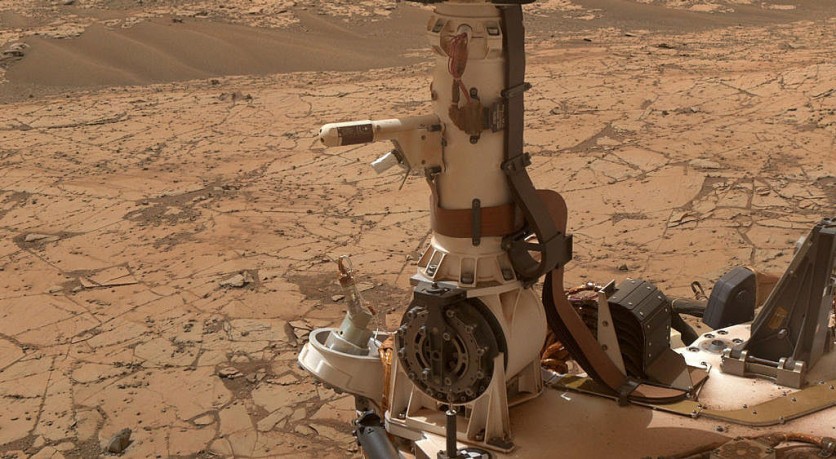NASA's Mars Curiosity Rover found organic molecules from the soil sample harvested from the Red Planet way back in March 2017.

A group of researchers helped detect the organic molecules from the Martian soil, which is the first time NASA found one from the surface of the Red Planet, as per the report by Futurism.
NASA Mars Curiosity Rover Soil Sample Have Organic Molecules
When the Curiosity Rover was scooping the soil sample, which turned out to have organic molecules, it experienced a frustrating hiccup.
According to PopSci's report, NASA's Mars Rover experienced a sudden malfunction in its systems while attempting to collect the Martian samples from the Bagnold Dune of the Red Planet.
The culprit of the issue is its drill, which unexpectedly stopped working. Nevertheless, the crew did not falter and decided to continue the mission.
The scientist from NASA went on to find another way to retrieve the sample from the surface of the Martian planet.
Instead of placing the soil sample into empty containers, the team decided to put it in a cup that contained a chemical cocktail.
Later on, the sampling technique that the NASA scientists experimented with during the Mars Rover malfunction was dubbed as wet sampling.
Now, the technique that the scientists employed further helped NASA to find organic molecules from the Martian soil.
Mars Soil and Organic Molecules
The lead author of the recent study that looked into the soil sample of the Mars Rover, Maëve Millan, said that the "experiment was definitely successful."
However, Millan, who is also a postdoctoral fellow at the Goddard Space Flight Center of NASA, noted that they "haven't found what they were looking for, biosignatures."
Read Also: NASA Mars Recon Orbiter Captures Perseverance from the Red Planet-Here's How to Track Rover Location
Mars and Signs of Early Life
It is worth noting that biosignatures are meant to show signs of ancient life on the Martian planet.
It comes as scientists are currently looking into any evidence that proves the theory that Mars was once filled with life--contrary to its current cold and dusty state.
Meanwhile, organic molecules are also something notable as it is known to be the building block of the living creatures on Earth, as per the report by Inverse.
The lead author of the study published at Nature Astronomy said that: "One of the things that we were trying to look for [when searching for] organic molecule on Mars is to understand the past habitability of Mars and to look for bioindicators."
That said, the team is now attempting to look for the "parents" of the molecules to further understand their origins, noting that it could be part of some geological processes.
Related Article : NASA Releases Video Of WILD, Sci-Fi-Like Space Exploration Concepts--Which Ones Can Come True?
This article is owned by Tech Times
Written by Teejay Boris




